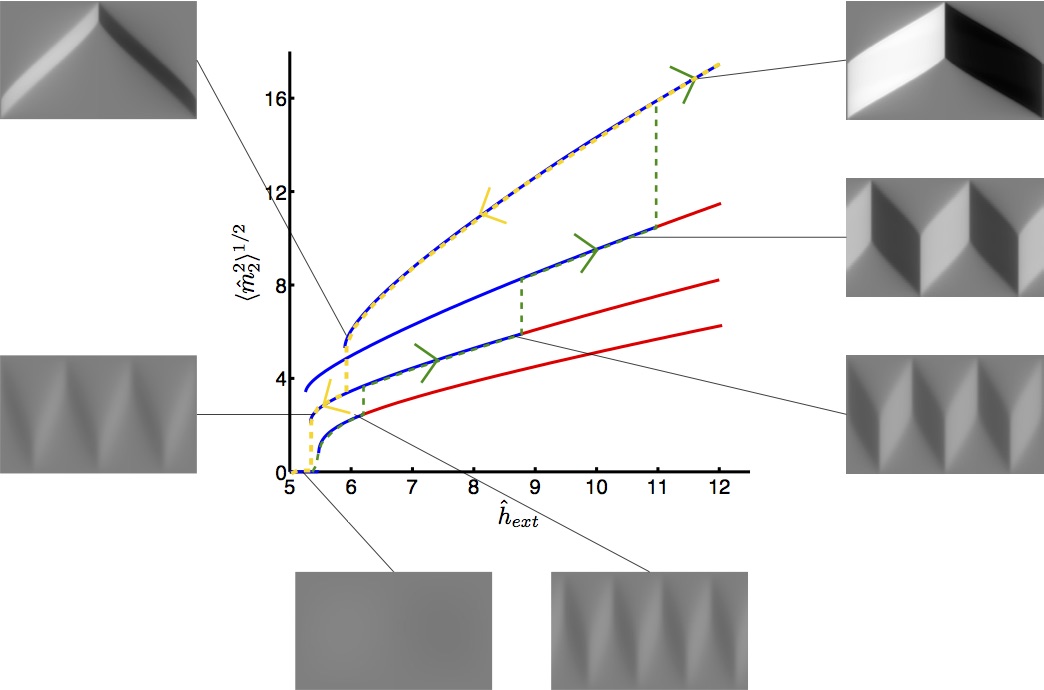Dipartimento di Matematica Guido Castelnuovo, Università Sapienza Roma

Abstract: The magnetization of a ferromagnet is known to form patterns in order to minimize the sum of exchange and stray-field energy (even in the absence of a strong crystalline anisotropy, as in soft materials like Permalloy). Depending on the geometry of the sample, the magnetization features domains, in which it is nearly constant, separated by comparatively sharp transition layers (i.e. walls). Even if the sample comes in form of a thin film (thickness in nanometer range), the energy landscape features many local minimizers --- to the effect that the switching route is complicated and hysteresis occurs. Despite a small film thickness, direct numerical simulation often is not an option for realistic lateral sample sizes and material parameters: The problem resides in the widely separated length scales and the expensive three-dimensional stray-field computation. For a number of specific patterns, we have adopted a different strategy: After identifying the relevant parameter regime, we derived an appropriate (dimensionally) reduced model, which capitalizes on the scale separation, and that is numerically tractable. We shall present several examples, including quantitative comparison with experimental data (Kerr microscopy). Our experimental collaborator is R. Schafer (IWF Dresden).

